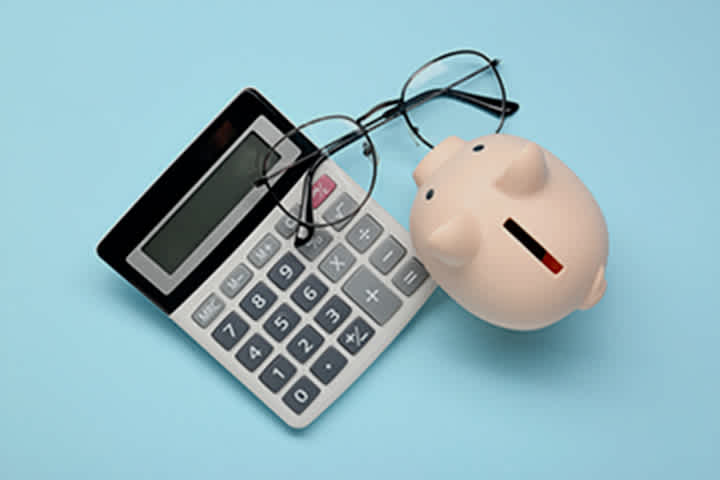Start growing your pension sooner rather than later
Keytrade Bank
keytradebank.be
November 23, 2023
4 minutes to read
1. How do you build a pension?
The Belgian pension system is based on four different pillars. This means there are four ways to build a pension.
• First pillar
The first pillar is the statutory pension you receive from the government each month. This amount differs for everyone. It depends on your employment status (civil service, self-employed, employee or a combination), your family situation, the number of years you have worked and the income you have earned. This pension is linked to an index. If inflation rises, this means life is becoming more expensive and this type of pension will go up. If you have not yet retired but would like to find out the pension you may receive later, you can visit MyPension.be to see your personal situation.
• Second pillar
The second pillar is the supplementary pension. This supplementary pension depends on your employment status.
> As an employee, you receive your supplementary pension via your employer or industry organisation. However, it is not mandatory for employers or industry organisations to offer a supplementary pension plan. A minority of employees do not have access to it, but they can choose to join a voluntary supplementary pension scheme for employees individually. > Self-employed persons have a range of options. In addition to a voluntary supplementary pension scheme for the self-employed (VAPZ/PCLI), self-employed persons with a sole proprietorship or free profession can conclude a pension agreement for the self-employed (POZ/CPTI). If you have a company, you can do this with an Individual Pension Agreement (IPT/IPT). > Statutory civil servants do not receive a supplementary pension. Contractual civil servants can receive a supplementary pension, but this depends on the government department they have worked for.
This supplementary pension is managed by an insurer or pension fund, which invests the paid-in premiums and pays out a certain amount when you retire. You can check the status of your supplementary pension at MyPension.be each year. Please note that this website provides your gross amounts that are still subject to taxes and social security contributions.
• Third pillar
The third pillar includes all the plans that allow you to build an extra pension pot yourself with tax relief. There are two ways to do this:
Pension savings allow you to build an extra pension pot for your retirement. You can save up to 1,050 euros each year with 30% tax relief or up to 1,350 euros with 25% tax relief until the year you turn 64*.
*tax position january 2025
A pension savings account (such as a pension savings fund with a bank). Such a fund invests in shares, bonds and other asset types. This means its return depends on stock market developments.
A pension savings insurance policy with an insurance company. Pension savings insurance offers you a minimum annual return, which is known in advance. It also gives you the opportunity to share in the investment income.
Long-term savings allow you to build up an additional pension pot through life insurance. You will receive 30% tax relief on the premiums you pay in. The maximum amount you can deposit each year depends on your professional income (up to an absolute ceiling of 2,350 euros). You can also continue your long-term savings after retirement.
A pension savings fund or long-term savings plan gives you the freedom to decide when to withdraw your funds. This is not the case for a savings insurance policy, which has a maturity date (usually on your 65th birthday). It is important to bear in mind that even though you do receive tax relief, you are still taxed when you withdraw the funds.
• Fourth (and fifth) pillar
The fourth pillar refers to the efforts you make yourself to build your nest egg. In contrast to the third pillar, you do not receive any direct tax relief on these. You are free to use these funds and you do not have to wait until retirement to withdraw them. The fourth pillar includes savings and investments. Some people consider investment in real estate as a separate fifth pillar (although this can also easily be included in the fourth pillar). Owning your own home is always a bonus for your retirement anyway, especially if you have paid off your mortgage.
2. When is the best time to start building your pension?
For most Belgians, the first, second and third pillars will not be enough to fully enjoy their retirement. There are several reasons for this:
> Most Belgians stop working before they reach state pension age. Unfortunately, retiring sooner also means a lower statutory pension. On average, Belgian men stop working at the age of 60.9 and women at the age of 60.1 (source: OECD).
> Life expectancy is increasing. We live longer and our years in retirement are increasing. Today, a 65-year-old man is expected to live another 18.7 years and a woman another 21.7 years. Thirty years ago, this was 14.1 and 18.5 years, respectively (source: Statbel).
> Belgium has an ageing population. Its active population is shrinking as its number of retired people is increasing. The government's pension expenditure is rising, and right now, nobody can guarantee it will still be able to afford it in the long term.
For many people, retirement is the furthest thing from their minds. Today, they probably have other priorities to consider: getting the most out of life, buying a home, starting a family or simply getting by. Nevertheless, it may be a good idea to add your pension to your list of priorities today. Time is the greatest asset you have when it comes to pension accrual. The earlier you start, the more time your money has to grow. This is why it is advisable to start thinking about your pension as soon as you start working. And how about the second-best time to start thinking about your pension? That would be … today. The reason why 'time' is so important is that it allows you to benefit from the effect of compounding, which means you get a return on your returns. The return you receive in one year is added to the rest of the capital the following year. You will then receive a potential return on this new sum, which leads to exponential growth. Let’s take Sarah and Tim's case as an example. Sarah invests 100 euros each month and achieves a theoretical return of 5% per year. Sarah has started early: she begins investing at the age of 25 and continues until she turns 65. Tim has a more carefree nature and starts investing at a later age of 45, but he invests much more than Sarah: he puts in 500 euros a month rather than 100 euros. He also achieves a theoretical return of 5% per year and continues to invest until he turns 65. So who will achieve the highest return? Sarah, who started earlier and has invested a smaller amount – a total of 48,000 euros? Or Tim, who started later and has invested a larger amount in larger instalments – a total of 60,000 euros? The right answer is Sarah. She will have saved 152,208 euros, while Tim’s final balance will be 79,240 euros. This is difficult for our brains to grasp, but investing a smaller amount sooner gets you more potential returns than postponing your investment and putting in larger amounts.
3. Tips for making the most of your retirement later?
1. First, fill the pension pots on which you receive tax relief. This means you set up a pension savings plan. You can do this as soon as you reach adulthood and have a taxable income. You will receive 25% or 30% in tax relief on those pension savings. Supplement this with long-term savings.
2. Find an employer that offers a group personal pension. If your employer does not offer a group personal pension, join a voluntary supplementary pension scheme for employees (VAPW/PLCS). If you are self-employed, you can join a voluntary supplementary pension scheme for the self-employed (VAPZ/PCLI) and supplement this with a pension agreement for the self-employed (POZ/CPTI) or Individual Pension Agreement (IPT).
3. Start investing. Even though it exposes you to risk, it historically generates a potentially higher return, even when you factor in all the stock market dips. It is important to focus on the longer term, preferably at least 7 years, so that your investments have time to recover if the stock markets go through a period of heavy weather. Investing with Keytrade Bank is possible from 25 euros a year.
4. Buy a home instead of renting one. Buying your own house or apartment is usually a good idea: there's no rent to pay to a landlord, and you invest in your personal property. Looking to buy a house? Use our free mortgage calculator.
5. Don't give too many of your assets away too soon. It’s a nice gesture to share some of your wealth with your children and other people or organisations you hold dear during your lifetime. The government has also made gifts more attractive for tax purposes than inheritance tax. One disadvantage of gifts, however, is that they are final.
6. Don't retire (too) early and work full time or reduced hours that are the equivalent of full-time status.
Working part time will always result in a smaller pension than working full time. If you want to work part time (even for a short period), time credit or special leave (parental leave, palliative leave, etc.) may be an interesting alternative. In that case, the period in which you are not working can equate to full-time status and therefore count towards your pension accrual.
The situation is different for civil servants. Their employment status generally makes it easier to continue to accrue pension entitlements. The pension accrual of the self-employed is not affected by whether they work full-time or part-time. 7. Consider earning an extra income after retirement.
Pension savings or investments?
Choose an account with an attractive interest rate or make your money work for you by investing it.


